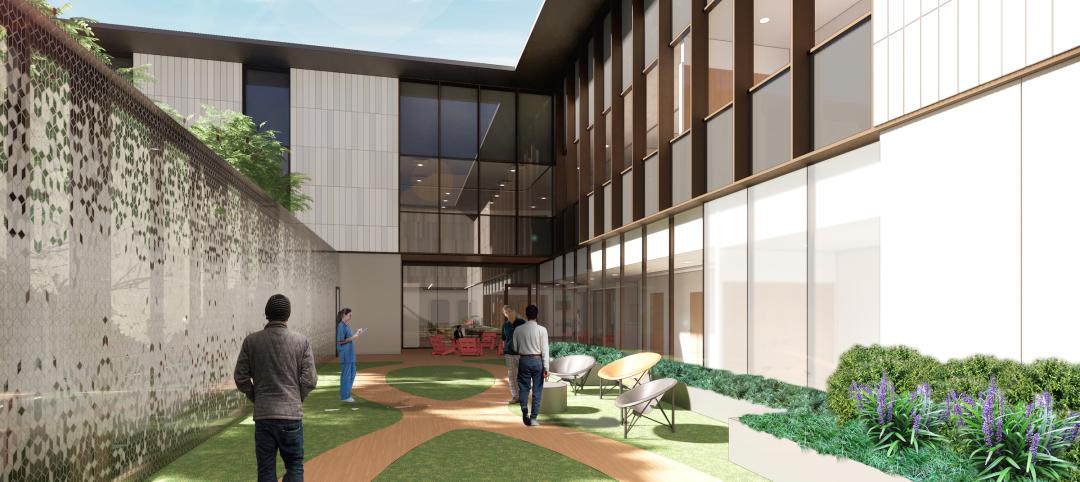A lot can happen and change in five years, and a lot has in healthcare. But to some degree many things have stayed the same due to resistance, being ignored, or just slow to change.
It has been five years since the Patient Protection and Affordable Care Act (PPACA, or ACA for short) was signed into law in March of 2010. Since that time, we have seen a continued shift to outpatient care, high utilization of hospital-based and free-standing emergency departments, the evolution of public and private insurance exchanges, the beginnings of defining quality and service metrics, and a slow migration from volume-based “first curve” world toward a value-based “second curve” industry.
The smart money is on shifting toward lower-cost, high-value care wrapped by a population health management mentality. Even if the payer system never moves fully to value-based, the more efficient and efficacious health systems emerging from this migration will be well positioned to provide competitive, low cost care in a volume-based or value-based system.
WHAT DO THE STATISTICS SAY?
An intended outcome of the ACA and reform is to reduce overall inpatient activity by managing health, reducing average length of stay (ALOS), reducing readmissions, and generally moving toward a holistic approach of population health rather than an acute, episodic approach.
Many are still skeptical that change is possible and that the government-sponsored system will fail. But data from the American Hospital Association (AHA) shows some interesting trends. From 2010–2012 (2012 is the latest data available at a national level), overall patient days and patient days per 1,000 population have declined. The number of inpatient beds has stabilized and decreased slightly, while emergency department visits and hospital-based outpatient visits continue to increase.
For years, pundits have postulated that with population increase and the aging Baby Boomer impact, inpatient utilization would increase. But what has happened overall, and in most markets, is the opposite. Inpatient days are declining.
In a Midwest market where CBRE Healthcare is currently working, Truven Health Analytics is projecting an overall inpatient use rate decline over the next five years. In many markets, providers are turning to Milliman models (Truven and Milliman provide data and consultative services to the healthcare industry related to retrospective and prospective healthcare utilization), projecting the impact of managed markets.
Clinical integration continues to increase with more than 60% of community hospitals (non-government facilities) affiliated in some manner with larger integrated delivery systems. Providers are realizing that there is value in integration, including payer leverage, rational distribution of services, access to clinical protocols, access to capital, sharing of clinical information, geographic diversity to better manage population health, and cost distribution to lower the overall cost of care.
Many systems that took part in the Accountable Care Organization pioneer projects have since left them, yet they still continue to develop their own efficient networks of care, partner with providers and payers, partner with community entities, and develop robust primary care networks through either traditional means or the establishment of primary care medical homes.
Regardless of what the government is doing or not doing, the market has responded and is getting ready for a value-based world where the inpatient hospital is no longer the center of the healthcare universe. Will there still be a need for acute-care hospitals? I say, without a doubt, yes.
But our focus on the “hospital on the hill” as the sole location for all of our healthcare needs has changed, and will continue to evolve.
WHAT ARE HEALTHCARE ORGANIZATIONS DOING ABOUT IT?
A sound planning approach that is implementation oriented is required. Time and dollars are too important to leave to hope and chance. The decisions are multi-variate and require a focus on strategy, facilities, real estate, financials, and overall care model.
1. Market Analysis Scenario Planning
A rigorous market analysis focusing on inpatient use rates, market share, and length of stay is required. As inpatient discharge rates decrease, so will overall bed demand.
This is an intended consequence of the ACA and the move to a value-based world. The goal is to manage hospitals stays (and the high costs associated with these stays) by better managing health.
We are modeling bed demand with several healthcare providers. These models are based on use rates remaining static or dropping, certainly not increasing. In the same models, we are adjusting market share to account for these drops.
But there has to be a corresponding strategy to increase market share, whether it be physician recruitment and alignment or through increased partnerships with other regional hospitals and providers that are referral sources.
Hope is not a strategy, but planning on how to shore up declining inpatient volumes is. As lengths of stay change, efficiency in operations will also demand that ALOS stabilize. All of this points to a steady state or decline in inpatient bed need.
2. Plan for Right-Sizing Inpatient Care
Inpatient care is not going away. However, our nation’s hospitals continue to age and are rife with infrastructure, standard-of-care, and operational issues. In short, they are out of date with contemporary and efficient care delivery.
Investment in inpatient core assets has slowed, and providers struggle with spending dollars when there is no guarantee on return on investment. Having a long-view to provide more efficient “outpatient like” hospitals must be the focus. Downsizing is a reality and re-investing in new/renovated modern facilities is occurring.
3. Plan for Ambulatory Care Strategies
As care continues to shift to ambulatory environments in primary and specialty care, healthcare organizations are seeking strategies and tactics to increase their capture rate of this market. Healthcare systems are developing robust primary care strategies to “blanket” their service area and cover lives.
Providers are also continuing to move “pure” ambulatory functions out of the high-cost, difficult to access, core hospital campus into dedicated, patient and provider friendly ambulatory care centers (ACCs). These ACCs are either on or off the medical campus. If they are on-campus, they should be separate and distinct from the inpatient chassis.
Owners, planners, project managers, architects, and builders need to provide the same level of creativity in site, facilities, and operational planning for ambulatory care as they have done for inpatient care over the last two decades.
CONCLUSION
Ultimately, healthcare providers are seeking direction on how to plan for a value-based world while still very much operating in a volume-based market. Successful organizations will position themselves to cover more lives and establish long-lasting relationships with physicians and other providers while re-tooling their inpatient and outpatient portfolio of assets to meet the changing needs and evolving requirements of payers and consumers.
By improving efficiency and developing broader networks, providers will succeed in today’s market. Following this approach will enhance volume in the short-term while preparing for long-term value-based incentives.
About the Author: Curtis Skolnick is Managing Director with CBRE Healthcare, based in Richmond, Va.
Related Stories
Sustainability | Apr 4, 2023
NIBS report: Decarbonizing the U.S. building sector will require massive, coordinated effort
Decarbonizing the building sector will require a massive, strategic, and coordinated effort by the public and private sectors, according to a report by the National Institute of Building Sciences (NIBS).
Healthcare Facilities | Mar 26, 2023
UC Davis Health opens new eye institute building for eye care, research, and training
UC Davis Health recently marked the opening of the new Ernest E. Tschannen Eye Institute Building and the expansion of the Ambulatory Care Center (ACC). Located in Sacramento, Calif., the Eye Center provides eye care, vision research, and training for specialists and investigators. With the new building, the Eye Center’s vision scientists can increase capacity for clinical trials by 50%.
Healthcare Facilities | Mar 25, 2023
California medical center breaks ground on behavioral health facility for both adults and children
In San Jose, Calif., Santa Clara Valley Medical Center (SCVMC) has broken ground on a new behavioral health facility: the Child, Adolescent, and Adult Behavioral Health Services Center. Designed by HGA, the center will bring together under one roof Santa Clara County’s behavioral health offerings, including Emergency Psychiatric Services and Urgent Care.
Healthcare Facilities | Mar 22, 2023
New Jersey’s new surgical tower features state’s first intraoperative MRI system
Hackensack (N.J.) University Medical Center recently opened its 530,000-sf Helena Theurer Pavilion, a nine-story surgical and intensive care tower designed by RSC Architects and Page. The county’s first hospital, Hackensack University Medical Center, a 781-bed nonprofit teaching and research hospital, was founded in 1888.
Project + Process Innovation | Mar 22, 2023
Onsite prefabrication for healthcare construction: It's more than a process, it's a partnership
Prefabrication can help project teams navigate an uncertain market. GBBN's Mickey LeRoy, AIA, ACHA, LEED AP, explains the difference between onsite and offsite prefabrication methods for healthcare construction projects.
Modular Building | Mar 20, 2023
3 ways prefabrication doubles as a sustainability strategy
Corie Baker, AIA, shares three modular Gresham Smith projects that found sustainability benefits from the use of prefabrication.
Building Tech | Mar 14, 2023
Reaping the benefits of offsite construction, with ICC's Ryan Colker
Ryan Colker, VP of Innovation at the International Code Council, discusses how municipal regulations and inspections are keeping up with the expansion of off-site manufacturing for commercial construction. Colker speaks with BD+C's John Caulfield.
Healthcare Facilities | Mar 13, 2023
Next-gen behavioral health facilities use design innovation as part of the treatment
An exponential increase in mental illness incidences triggers new behavioral health facilities whose design is part of the treatment.
Healthcare Facilities | Mar 6, 2023
NBBJ kicks off new design podcast with discussion on behavioral health facilities
During the second week of November, the architecture firm NBBJ launched a podcast series called Uplift, that focuses on the transformative power of design. Its first 30-minute episode homed in on designing for behavioral healthcare facilities, a hot topic given the increasing number of new construction and renovation projects in this subsector.
Sustainability | Mar 2, 2023
The next steps for a sustainable, decarbonized future
For building owners and developers, the push to net zero energy and carbon neutrality is no longer an academic discussion.

















